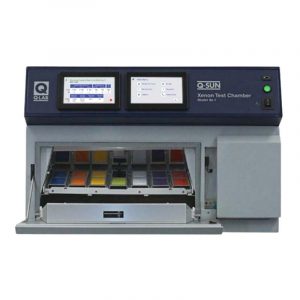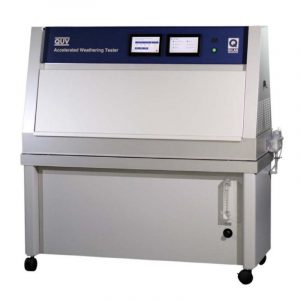Rubber aging: xenon lamp aging ultraviolet aging ozone aging
Rubber aging: xenon lamp aging ultraviolet aging ozone aging
The rubber aging test is to simulate the environmental factors that rubber may suffer in the actual use environment, such as sunlight, oxygen, ozone, temperature and humidity, and observe how its performance changes. Xenon test chambers and UV aging chambers are both devices used to simulate natural light aging, but there are some differences between them that lead them to be more suitable in some applications.
Rubber aging: xenon lamp aging ultraviolet aging ozone aging
Xenon lamp test chamber
Spectrum of simulation
Xenon lamps can better simulate the full sunlight spectrum, including ultraviolet, visible, and infrared parts.
Application
It is more suitable for applications that need to simulate the full spectrum of natural daylight aging, such as automobiles, building materials, etc.
The advantages
Because xenon lamps provide a spectrum closer to that of natural light, they can more accurately simulate real external environments.
Disadvantages
Costs and operating expenses may be higher than UV aging boxes.

Rubber aging: xenon lamp aging ultraviolet aging ozone aging
Ultraviolet aging box
Spectrum of simulation
It mainly produces ultraviolet light, especially in the UV-A and UV-B range, which is the main cause of the aging of most materials.
Application
It is often used for rapid aging tests and to simulate the aging of materials under ultraviolet light.
The advantages
Uv aging boxes are usually low cost and relatively simple to operate and maintain. Also, since it focuses primarily on UV, it may be more suitable for applications that require rapid aging.
Disadvantages
Without providing a complete solar spectrum simulation, some practical application environments may not be accurately simulated.

Rubber aging: xenon lamp aging ultraviolet aging ozone aging
Suggestions for selection:
If your goal is to simulate a full spectrum of natural light aging, and you need to consider the effect of the entire spectrum on rubber (for example, exterior car parts), then a xenon test chamber may be the better choice.
If your purpose is to perform a rapid aging test, or if you are only concerned with the effect of UV on rubber, then a UV aging box may be more suitable.
Choose the right aging test equipment according to your specific needs, test purpose and budget. Of course, there are other types of aging test equipment and methods besides xenon lamp test chambers and UV aging chambers, which are used to simulate different environmental conditions and application scenarios. Here are a few of them:
Rubber aging: xenon lamp aging ultraviolet aging ozone aging
Ozone aging chamber
This equipment simulates the aging of rubber in a high ozone concentration environment. Ozone can cause cracks in some rubber materials in the real environment. This aging box is especially used to test the resistance of rubber to ozone.
Hot oxygen aging chamber
Simulate the aging of rubber in high temperature and oxygen environment. This aging process simulates the changes in rubber when it is exposed to high temperature and oxygen for a long time.
Wet and hot aging box
As mentioned earlier, this device simulates the aging of rubber in a high temperature and high humidity environment. It is often used to test the stability of rubber and other materials to humid and hot conditions.
Rubber aging: xenon lamp aging ultraviolet aging ozone aging
Salt spray test chamber
This is a device that simulates the salt spray environment and is used to test the resistance of materials to salt spray corrosion. Although it is primarily used with metals, it can also be used to evaluate the performance of rubber or other protective coatings in Marine or winter snowmelt salt environments.
Dynamic aging test
Such tests do not just expose materials to specific environmental conditions, but also apply mechanical stresses, such as stretching or bending, in the process to mimic conditions in real use.
Suggestions for selection:
The key to choosing the right aging test equipment and methods is to have a clear understanding of the actual application scenarios and environmental conditions you want to simulate. If your product will be used under multiple environmental conditions, multiple aging tests may be required to fully evaluate its performance.
